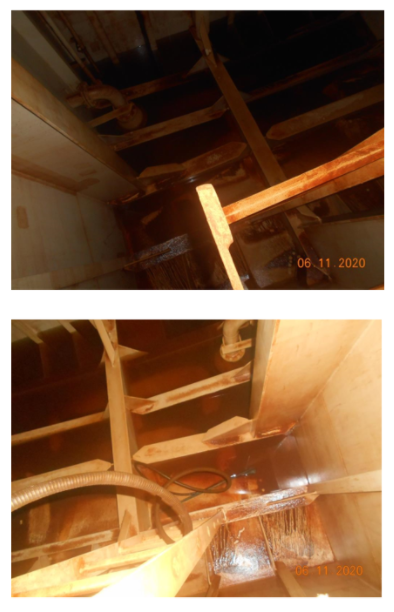IMCA in its recent Safety Flashes, shares a case where amid fresh water tank inspection, it was discovered significant sludge accumulation in the tank.

The incident
During inspection of a fresh water tank, it was discovered that there was significant sludge accumulation in the tank.
Based on the condition of the tank, it was seen as more than likely that other tanks would be similarly affected and that the cause was due to a common source of water.
[smlsubform prepend=”GET THE SAFETY4SEA IN YOUR INBOX!” showname=false emailtxt=”” emailholder=”Enter your email address” showsubmit=true submittxt=”Submit” jsthanks=false thankyou=”Thank you for subscribing to our mailing list”]
Sludge build-up in fresh water tanks, hoses and pipes can lead to the prevalence of bacteria that may pose a health hazard.
Findings
As IMCA explained:
“Our member understood that the condition was as a result of the quality of the water obtained from port. There was an accumulation of sedimentation and of organic and inorganic matter over a period of time”.
Lessons learned
- Immediate inspection of other fresh water tanks to ensure potability of water supply, and subsequent maintenance (taking note of the requirement for Confined Space Entry permits to work) was arranged as soon as reasonably practicable.
- Internal tank inspection for signs of possible contamination and debris every 6 months for potable water and every 12 months for non-potable water.
- Disinfection of hoses as a routine measure every 6 months, or whenever any contamination is suspected.
“Our member flushed hoses thoroughly through and completely filled them with a solution of 50 ppm residual free chlorine, which was then allowed to stand for a period of at least 1 hour before the hoses were emptied and re-stowed”.
…IMCA concluded.
See also:
Lessons learned: Always follow manufacturers instructions when installing batteries
Lessons learned: Dispose face masks responsibly
Lessons learned: Pneumatic line throwers ought not be used during mooring operation































































